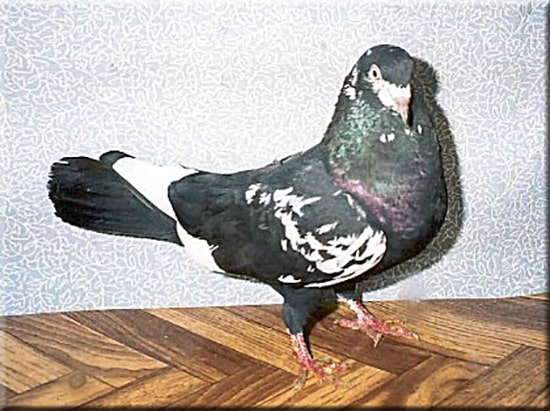
DOLAPCI
This diving and spinning breed is predominantly kept in the Eastern and Southern portions of the Aegean region of Turkey. Over the years, this area's breeders have followed the region's traditional performance and breeding qualities to develop today's style of dolapçı. With their kit flight, ever changing performance style, problem free physique and many other satisfying qualities dolapçıs have become the favorite breed of this region.
Dolapçı comes from the same general family of pigeons as the döneks and kelebeks. For this reason, they are labeled as clean legged kelebek by fanciers foreign to this breed. Again, by this type of fanciers, since dolapçıs can not be easily differentiated with döneks like in the case of kelebek, dolapçıs are referred as "a different kind of dönek" or other similar descriptions.
Because these breeds come from same origins, these descriptions might be thought as correct but, in reality, there are many fundamental differences between each one of these breeds. Even though, you can easily observe the differences in their nature and physical qualities on the ground, flight and performance differences in the air, I am going to try to describe the main differences between them here.
I hope by this dönek and dolapçı comparison, you can get a better understanding of dolapçı.
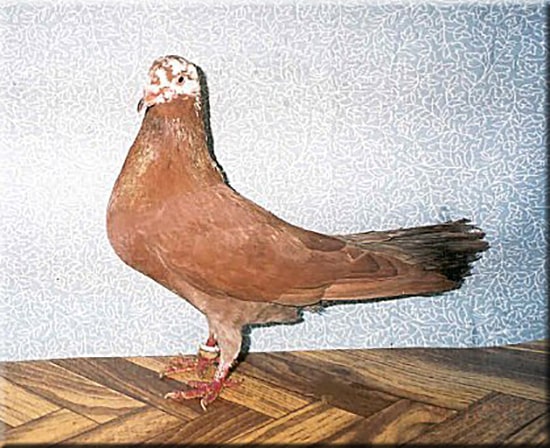
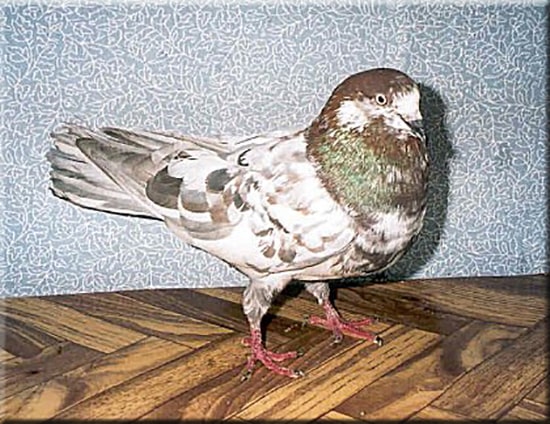
PHYSICAL CHARACTERISTICS
Dönek: Dönek: Wide and low body shape, long legs, large and visible leg scales, medium sized eyes with white rim, waddle walking, rather narrow tail in an upside down "V" shape and in general without oil gland.
Dolapçı: Tall standing-long body shape, medium sized eyes in various colors, strait walk, wide and flat tail and without oil gland.
FLIGHT STYLE
Dönek: Short flight in average 30-40 meters high, infrequent wing movement that result in a flight style that looks like the bird throws itself forward with each thrust, raking ability and single flight ability.
Dolapçı: High altitude flight where they become specs in the sky, flight time of 15 to 120 minutes (depending on the training they receive), no raking and kit flight.
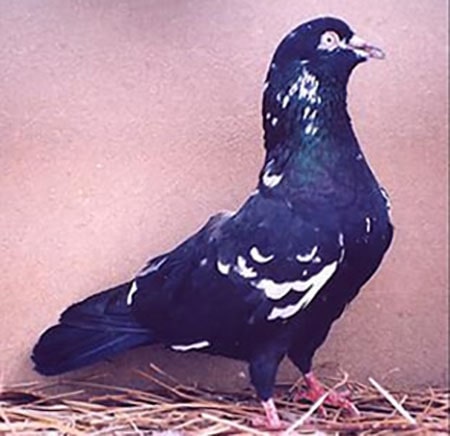
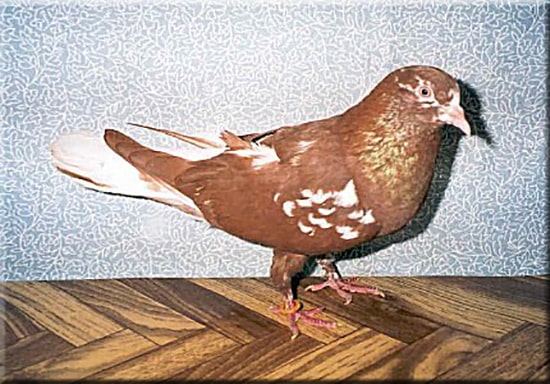
SPIN CHARACTERISTICS
Dönek: As a response to droppers, at a 45-degree angle to ground, it dives with its head leaned on left or right shoulder (towards the direction of the spin) and spins its body in a high velocity with its chest driving forward and using the tip of one wing and that corner of its tail as the axis for the diving spin. It enters the spin with the same velocity as the way ends the spin. Tail is always leaning on the opposite side of the shoulder the head is leaning on. The style of dive called "sarkma" (hanging), 90 degrees to ground is not seen in this breed and during the dive and spin it keeps its wings closed or half open.
Dolapçı: As a response to droppers or like its seen in kelebeks with out a dropper it will perform its dive and spin. During the spin it will keep its beak forward spin around it, almost like an airplane rapidly free-falling nose down. This can be described like a long and wide spiral dive. It will show its spin as a response to dropper while flying in low or medium altitudes or if flying in high altitudes with out any dropper by itself. If shown a dropper while flying high, it will respond with a loose but rapid and very long spiral dive. Even at these altitudes, air ripping sound it creates can be heard easily. It is most characteristic dives are done in the "sarkma" (90 degrees to ground) style and always with its wings completely open.
CHARACTERISTIC QUALITIES
Dönek: With their docile demeanor it is rather easy to control by the fancier. It has a rather sensitive body and open to illnesses. It may need some help raising its young for better results. Young birds do not show spin until they mature. It is expected to respond to droppers quickly and tight. If the adult birds rake or ride their tails during flight, when shown a dropper these move should not be present. It is normal to lose birds during bad weather conditions or if untrained young birds flown.
Dolapçı: If calmness is not targeted during breeding, it will keep its timid nature. It will respond to training well, in the air or on the ground. It has a rather strong body and will raise its young quite good. Maybe not as much as the adults but, the young birds will show their spin in short and agile moves until maturity. Dolapçı should never rake or ride its tail. It should be able to return home from 15-20 km. distances, including young birds. This quality is as important to the fanciers as their spinning dive.
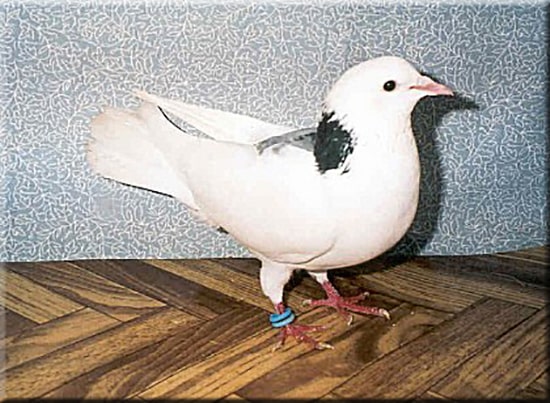
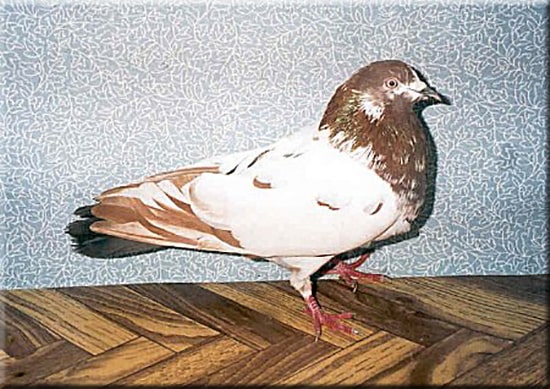
COLORS
Dönek: Black, blue and red are the main colors of this breed. In general, they will have bald head-white tail-white flight marking. There are also other patterns with white markings in different parts of the body. Most common markings are "baska" (self), galaça (bald head-white tail-white flights and white booths), akbaş (bald head) and akkuyruk (white tail).
Dolapçı: They are mainly seen in self and tiger pattern colors. Yamalı (patched, marking on the neck) and alaca (pied) are also seen frequently. Black, blue, red, yellow, dun, almond, de-roy, zeytini and white colors are the most popular ones, including the ones that are marked with white grizzles.
BREEDING REGIONS IN TURKEY
Dönek: İzmir, Bursa, Denizli, Nazilli, Ayvalık, Keşan and surroundings.
Dolapçı: All colors in Denizli and surrounding areas, black, blue and these colors tiger pattern colors in Isparta, Burdur and surrounding areas, yellow, red and altınbaş (golden head-white birds with yellow head) marking in Muğla and surrounding area in recent years tiger pattern birds have been gaining popularity in the city of Uşak also.
Dolapçıs are normally flown in 20 to 30 bird kits and fly with short beaked breeds. Their color variety and performance become very fulfilling. Presently, in Denizli and Burdur, there are works done on bettering the breed with close attention to bloodlines. For further information on this breed, you can visit the dolapçı page of the "Denizli's pigeons" site and take a look at another article on this breed written by Doç. Dr. Türker Savaş on our site also.
By İskender Damgacı
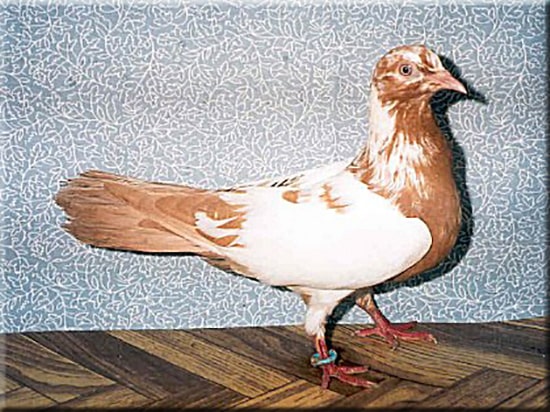
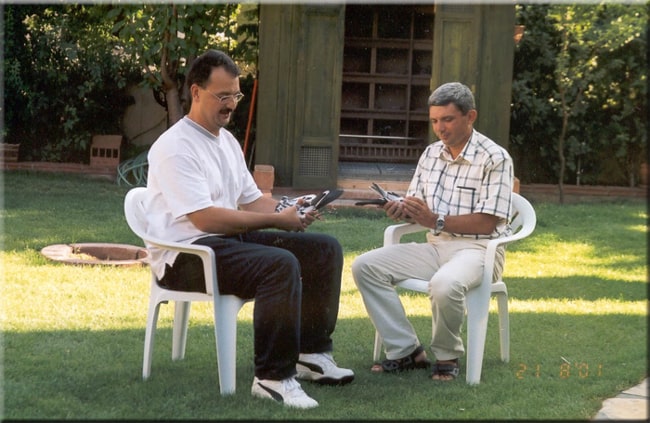
Prof. Dr. Türker Savaş (on the right) during his visit to Denizli with my dear friend Iskender Damgacı
I had a chance to visit Denizli on my summer vacation this summer. I can't say anything before mentioning how hospitable the people of Denizli were, foremost Iskender. Every loft we had a chance to visit, we were greeted with worm welcome and offerings. In the meantime, I would like to mention how much I was affected by the pigeons I watched and the pigeon keeping culture that was present. I can say the pigeon culture is rather old in Denizli. In fact this becomes evident quickly with a visit to the http://www.guvercinevi.com/]Denizli Güvercinleri / Pigeons of Denizli site.
Even though, I raise döneks, we did not visit the dönek fanciers in the town. We got to see one loft where they kept döneks, the way it should be kept. However, my main goal was to see the real dolapçıs and watch their flight qualities. First thing I can say about the dolapçıs, they are an "incredible breed". Hit the stick to the floor they fly, open the loft door they fall (dive to land). Do you like to fly your birds one at a time? OK dolapçı will fly. No, you want to fly 20-30 bird kits. You need to have dolapçıs. Do you like to fly a small kit? Throw 3 or 4 dolapçı and let them fly. Do you prefer to fly for a short time? As soon as your dolapçı kit fly, open your loft door and let them fall. Longer flight? Is 2 hours enough? How high they fly is also under your control: let them fly so high that you can't see them anymore or include an Azman to the kit and keep them at a medium height.
Yes, dolapçı must be the only breed which you can do all these with. Their spin, I should say "dolap" (wheeling or circling), is very different than döneks. You might say there is no difference between a wide spinning dönek and dolapçı's dolap but, if you look carefully, you will see very clear differences between them. One of these is while spin diving dönek closes and opens its wing, whichever is to the side of the spin direction. However, dolapçı will dive and spin with its wings fully open. In relation to this, while dönek spins on a straight line with its wing tip and tail corner becoming an axis for it, dolapçı draws an open coil. It looks almost like the inner wing's tip stays in a strait line.
As soon as you see them it becomes very obvious that the dolapçıs are better fliers than döneks. While döneks look rather relaxed, dolapçıs give a more agile impression. You can read the other qualities of dolapçı in the [url=http://www.dolapci.guvercinevi.com/]website dedicated to the breed of Dolapci.
I have couple of words for the dolapçı breeders of Denizli: There have been a stray move from the traditional breeding. It looks, the importance of color has come ahead of performance. I guess, one of the reasons of this is the constant comparison of dolapçı's wheeling (dolap) and dönek's spin (dönmek). Unfortunately, there is completely different breeding and flight styles between the two. It is sad to not to be able to see this. Really sad. I could not comprehend how some dolapçı breeders say this one is a dönek and this one is a firtikci (a local terminology for out of form performer). No. It is not a firtikci. It is dolapçı. Dolapçıs that perform out form are the firtikçis.
Dear pigeon friends of Denizli, fly your dönek like dönek and your dolapçı like dolapçı. Dolapçı breeders, don't envy the black bold heads (common color of dönek). Follow the rules of traditional dolapçı and your historical pigeon keeping rules. Before the colors, test your birds flight qualities, intelligence, and performance. Color? That is easy.
Thank you.
Prof. Dr. Türker Savaş
P.S.: I would like to thank Iskender Damgacı and his family for hosting us like we have been dear friends for many years (even though, we were meeting for the first time) during our stay in Denizli.
